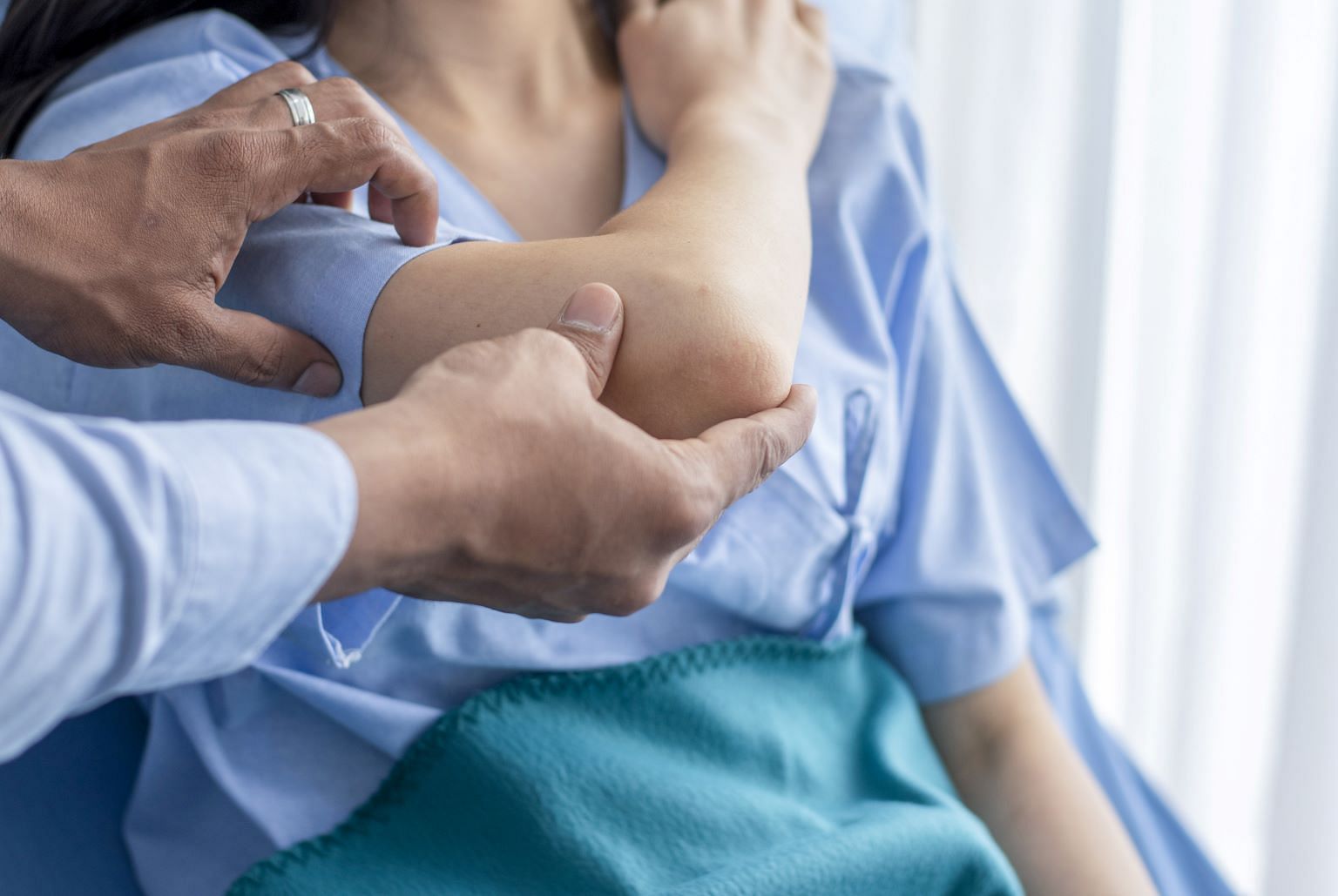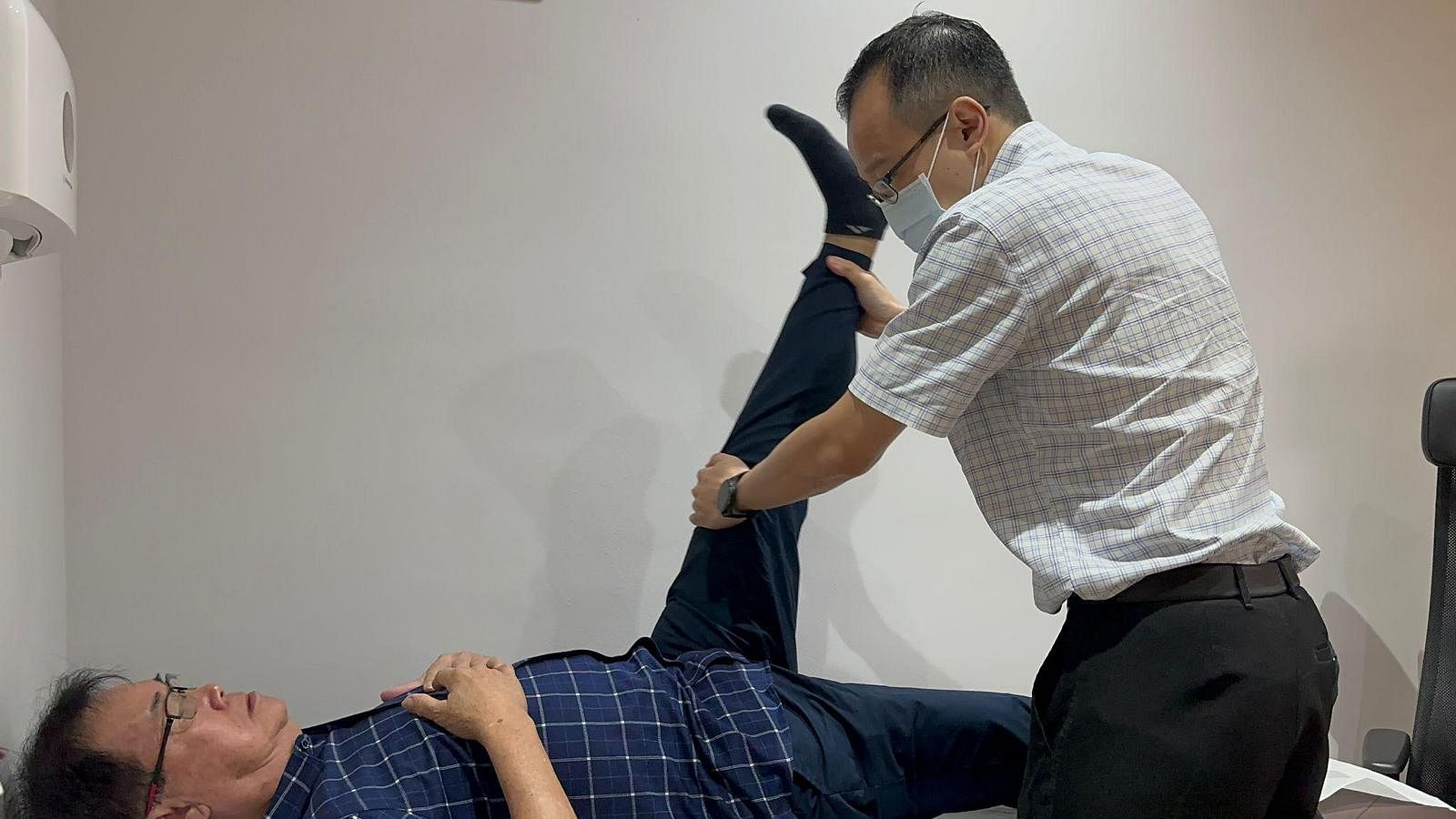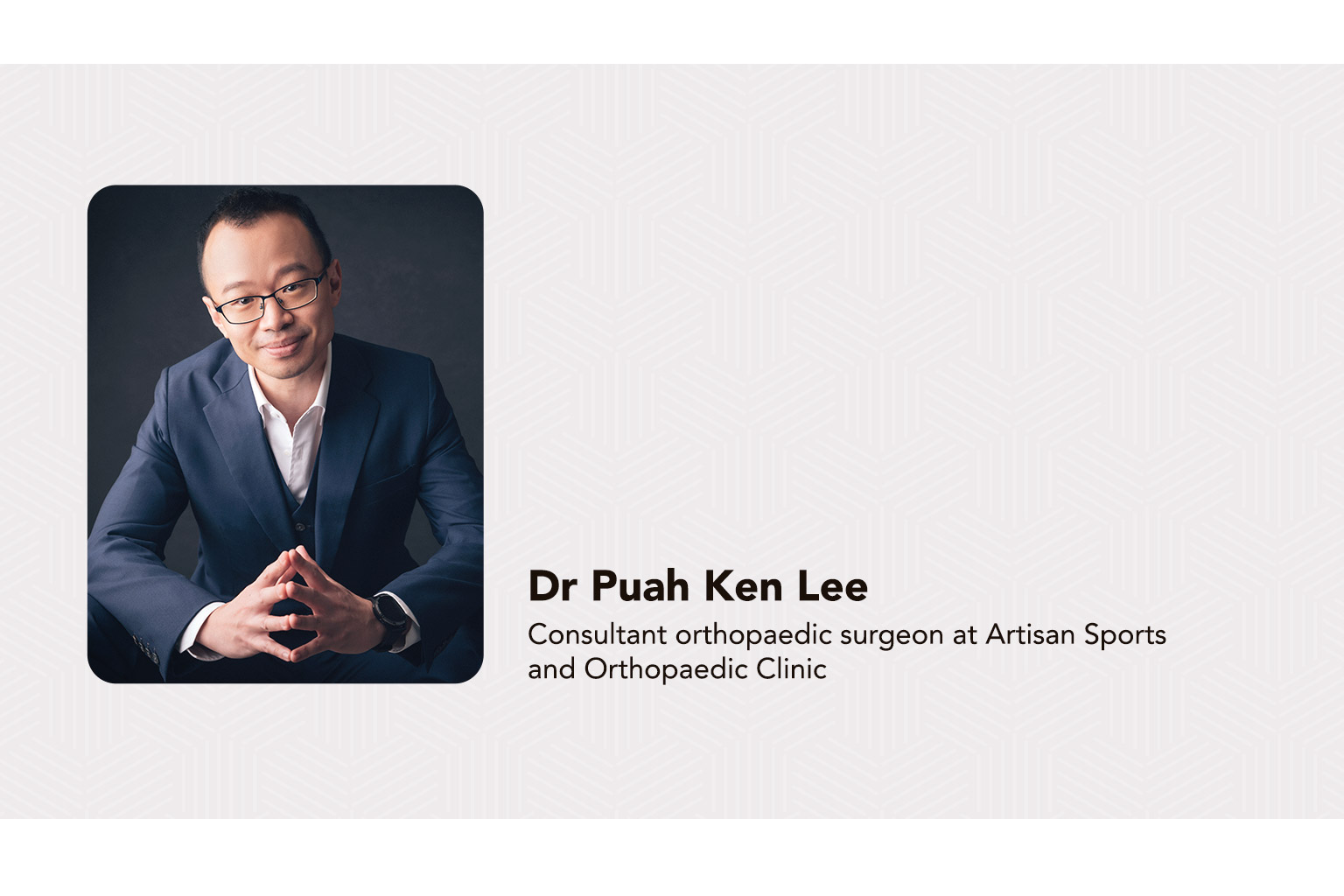BRANDED CONTENT
From a frozen shoulder to stiff elbows: Your guide to upper body pain and when to see an orthopaedic specialist
Pain is a common feature in various shoulder and elbow conditions, so it is crucial to get a proper diagnosis to prevent further degeneration

Upper body pain is usually the result of sports injuries, repetitive movements or age-related wear and tear. PHOTO: GETTY IMAGES
Follow topic:
The shoulder and elbow are complex joints that have the ability to provide extensive motion but are also prone to a variety of issues. Common problems include shoulder dislocations, frozen shoulder, tennis or golfer's elbow, and osteoarthritis.
Explains Dr Puah Ken Lee, consultant orthopaedic surgeon from Artisan Sports and Orthopaedic Clinic: “These are often caused by sports injuries, repetitive movements or age-related wear and tear which can cause discomfort, pain and reduced range of motion,”
Such injuries may hinder one’s ability to perform simple daily tasks in the long run. To prevent further degradation of the joint, proper diagnosis and treatment are paramount, says Dr Puah, who is also the only Singaporean orthopaedic surgeon trained by French physician Dr Laurent Lafosse, a renowned pioneer of modern shoulder surgery.
Since many shoulder and elbow conditions often share similar symptoms, self-diagnosis can be a challenge.
“As soon as you notice the first signs, it is important to consult an orthopaedic specialist who can diagnose and treat such ailments,” says Dr Puah.
Here, he discusses common shoulder and elbow conditions as well as warning signs and treatment options:
Dislocations, tears and osteoarthritis: Your guide to shoulder pains
Shoulder dislocations
The shoulder is held together by tendons, ligaments, cartilage and muscles working together to provide mobility.
“Shoulder dislocations occur when the head of the arm bone that sits in the shoulder socket comes out of its position. Dislocation tends to happen from shoulder instability which may be caused by injuries or loose ligaments.
“Shoulder instability, which feels like your shoulder is about to give way or slip out of its socket, is slightly different to dislocation, which is accompanied by pain and the inability to move it,” explains Dr Puah.
Genetics also play a part: Those who are born with loose shoulder joints may also be more prone to dislocation.
Symptoms: Pay attention to how your shoulder feels and looks. Spot signs of swelling, red or painful joints, or fever. Other symptoms include popping or locking of the shoulder joint; feeling like your shoulder is stuck in a certain position; and experiencing weak muscles or reduced strength in the affected area.
Doctor’s advice: “To prevent it from being dislocated again, it is important to seek treatment when you feel your shoulder is unstable,” advises Dr Puah. “The doctor will usually prescribe painkillers and physiotherapy to strengthen muscles and improve shoulder stability.
If instability persists despite this, especially if the cause for instability is injury, a minimally invasive surgery performed through arthroscopy may be required to stabilise the shoulder.”
Rotator cuff tears
A rotator cuff tear occurs when there is a tear due to shoulder dislocation or other injuries or from degeneration. Similar to how a shoulder may get dislocated, rotator cuff tears can happen from sports activities or wear and tear, says Dr Puah.
“Blood supply also reduces as we age, thus affecting the ability of our muscles and tendons to heal properly and remain healthy, making us more prone to rotator cuff tears,” he adds.
Symptoms: A tear can be partial or complete. You may feel pain, shoulder muscle weakness, limited range of motion, and cracking or popping sounds when the affected shoulder is moved.
Doctor’s advice: “Depending on the severity of the tear, your doctor may prescribe medication such as painkillers, physiotherapy or injections to reduce inflammation,” says Dr Puah. “If you have a complete tear, you may require rotator cuff repair surgery.”
Expect some swelling in your hand, arm and shoulder after the procedure, which will subside within a few days.
“It will take about four to six months before you can use your shoulder fully,” adds Dr Puah, who also recommends physiotherapy and/or rehabilitation exercises to restore strength and regain motion of the joint.

Frozen shoulder
A frozen shoulder occurs when the connective tissues and muscles that make up the shoulder joint get inflamed and irritated, causing them to thicken and tighten.
“It is a slow-progressing condition that causes pain and stiffness in the shoulder, greatly limiting its range of motion,” notes Dr Puah.
A frozen shoulder can be the result of trauma or unknown causes. Sometimes, prolonged immobility and certain diseases such as diabetes, hypothyroidism, hyperthyroidism and Parkinson’s disease can cause shoulders to freeze. Women are also more likely to develop frozen shoulders due to hormones and menopause.
Symptoms: If you feel your shoulder’s range of motion is reduced when doing daily activities such as putting on clothes or combing your hair, combined with a dull ache or sharp pain in the outer shoulder or upper arm, it is likely that you have a frozen shoulder.
Doctor’s advice: “The first line of treatment is usually a non-invasive option such as medication – both oral and via injection – to reduce inflammation, plus physiotherapy,” says Dr Puah. “These treatments are conducted over a year and surgery is only considered after these options have failed.”
Dr Puah can also perform a minimally invasive arthroscopic procedure that helps to release the tension in tighter parts of your shoulder joint. It is done as a day surgery and the patient is encouraged to use their arm immediately to facilitate healing, adds Dr Puah. There will be some initial swelling and discomfort for up to two weeks and full healing takes between two to three months.
Shoulder and elbow osteoarthritis
Osteoarthritis is a chronic condition that causes inflammation and stiffness of the joints. It is usually caused by a previous injury, age, obesity following an autoimmune disorder such as rheumatoid arthritis.
Osteoarthritis of the shoulder can be the result of a long-standing rotator cuff tear, known as cuff-tear arthropathy, or from wear of the shoulder joint itself, known as glenohumeral osteoarthritis. Likewise, osteoarthritis of the elbow can be the sequelae of prior elbow injury or from wear and tear of the elbow joint.
Symptoms: Look out for pain in the affected joint, stiffness and decreased range of motion as well as difficulty performing overhead movements and daily activities.
Doctor’s advice: Treatment varies based on the severity of symptoms. “Typically, non-steroidal anti-inflammatory drugs and lifestyle changes are prescribed,” says Dr Puah.
“In severe cases, physiotherapy, injections or surgery may also be recommended.”
Muscle inflammation and cubital tunnel syndrome: Your guide to elbow pains
Tennis elbow
As its name suggests, tennis elbow can be caused by holding or hitting heavy objects such as a tennis racquet and ball. It is part of a family of overuse conditions known as repetitive strain injuries. Most patients with tennis elbow do not play tennis though they may play other sports or have occupations where they have repetitive arm, wrist and hand movement.
“This condition occurs when the tendons that attach your muscle to the elbow become inflamed due to overuse, the elbow being hit hard and poor body mechanics that cause strain on the muscles and tendons of the forearms,” explains Dr Puah.
Athletes are at risk of developing this issue as are adults aged between 30 and 50 since that’s when muscle strength starts deteriorating.
Symptoms: You will feel pain most often at the area outside your elbow and forearms, with possibly some swelling.
Doctor’s advice: A tennis elbow usually resolves with rest and stretching.
“Doctors will usually prescribe anti-inflammatory medication, bracing and physiotherapy to improve muscle strength,” says Dr Puah. “Patients may benefit from injections to the affected area. For some patients with persistent pain, minimally invasive surgery can be performed through the use of arthroscopy.”

Golfer’s elbow
Like tennis elbow, golfer’s elbow is also an inflammation of the muscles but on the inside of your elbow instead of outside.
Although the condition is not exclusive to golfers, it develops due to the overexertion of the elbow area when there is repetitive movement of the forearm.
“Acute trauma to the elbow or overdoing workouts such as bicep curls while using weights that are too heavy or not warming up enough can also trigger this condition,” warns Dr Puah.
Those who do manual labour are also more susceptible to golfer’s elbow.
Symptoms: You may experience a sharp jolting pain, especially when bending or twisting your wrist and lifting things. You may also have difficulty gripping objects and experience the occasional locked or stiff elbow. A burning or stabbing pain radiating from the elbow joint means the condition has worsened and you must seek medical attention at once.
Doctor’s advice: “Similar to tennis elbow, golfer’s elbow usually resolves over time. Treatment includes anti-inflammatory medication and physiotherapy,” says Dr Puah. Sometimes he also recommends an elbow brace or splint which helps to redirect the pressure on the affected area, giving it time to heal.
Cubital tunnel syndrome
Also known as ulnar neuritis, the condition occurs when the ulnar nerve on the inside of your elbow is inflamed or injured.
It is usually caused by repetitive motion such as bending the elbow with heavy weights and prior fractures or dislocation of the elbow.
Symptoms: You may experience numbness and tingling running down from the elbow to your ring finger and/or little finger; weakness in the hand and clumsiness when gripping objects; or pain and discomfort in the affected arm.
Doctor’s advice: “Cubital tunnel syndrome does not heal on its own and if left untreated, you are at risk of permanent nerve damage and muscle atrophy (the wasting of muscle mass) in the arm,” says Dr Puah.
An occupational therapist may prescribe exercises to improve nerve gliding. Medication may also be prescribed to reduce inflammation and pain.
“Depending on the severity of the condition, surgery may be required to relieve the impinged nerve,” adds Dr Puah. “Depending on the condition, minimally invasive surgery can be performed to decompress the ulnar nerve.”



